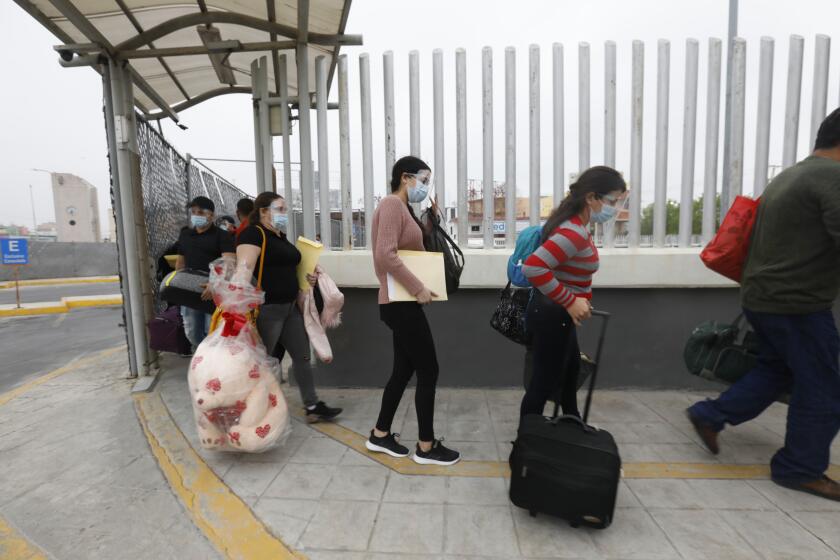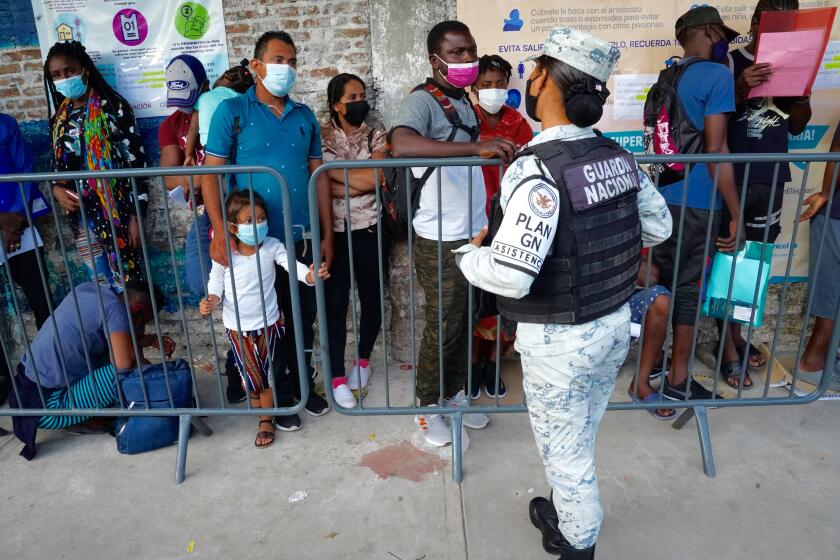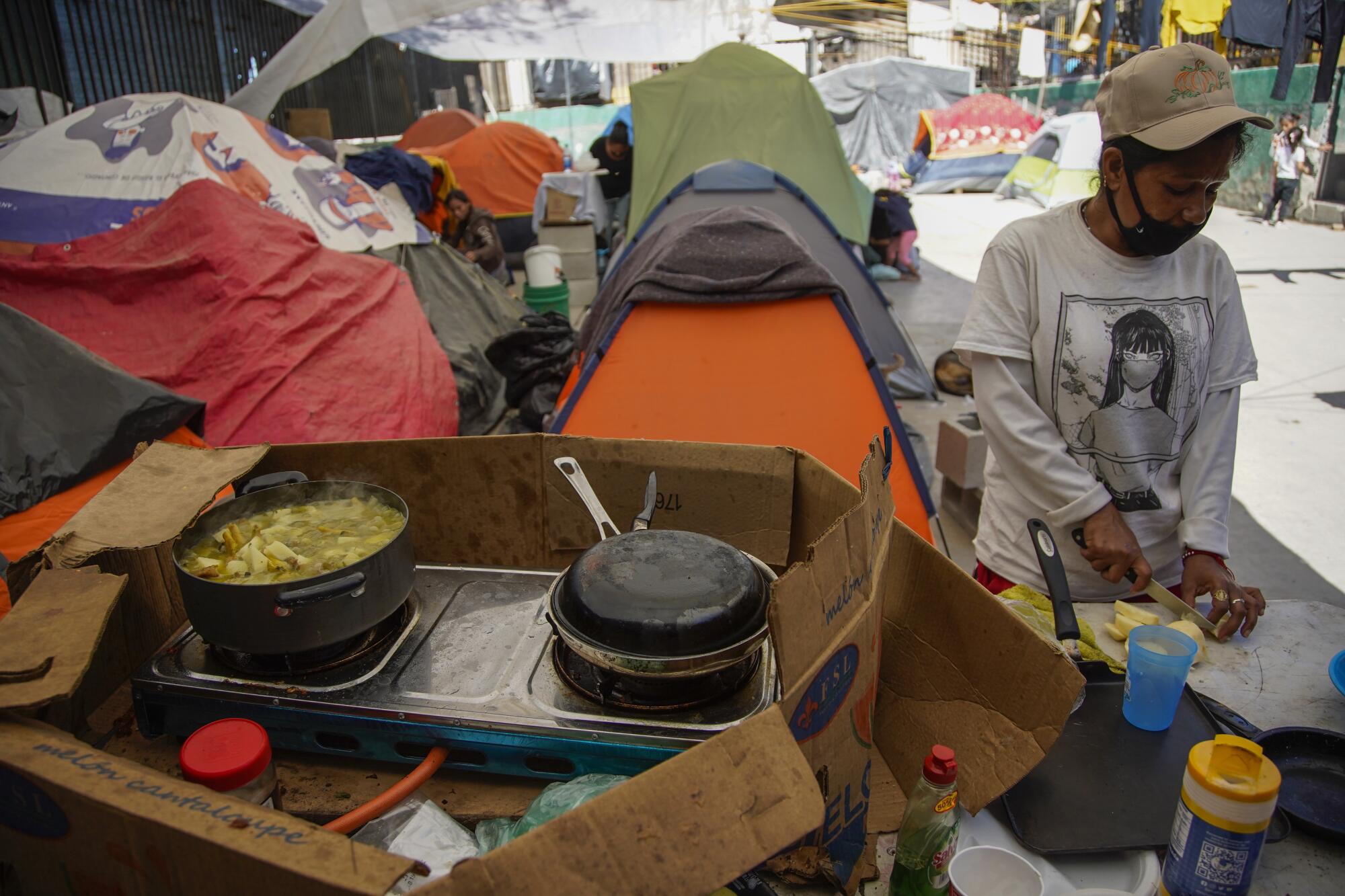
- Share via
Ever since she and hundreds of other asylum-seekers were forced from a camp outside the San Ysidro Port of Entry in Tijuana, Vanessa has worked two jobs — attendant at both a laundromat and a parking lot — to pay for the dilapidated apartment that her family shares with two other families.
They sleep on mattresses on the floor. There is no stove, no refrigerator. The front room floods when it rains. The neighborhood in western Tijuana does not feel safe — one of Vanessa’s children has already been threatened since they moved in last month.
And the landlord keeps raising the rent.
Vanessa, originally from Honduras, asked not to be fully identified because of the danger she is in, as did the other migrants interviewed for this article.
Conditions were far from ideal in the tent camp in El Chaparral plaza, which sprung up in early 2021 as asylum-seekers waited for U.S. border policies to change so they could request protection. Migrants were exposed to the elements with nowhere to go no matter how hot, cold or wet it became. They often had to pay to use the bathroom or bathe, so they would save what little money they had for this purpose and rely on food and clothing donations, which came nearly every day from Tijuanenses and San Diegans alike.
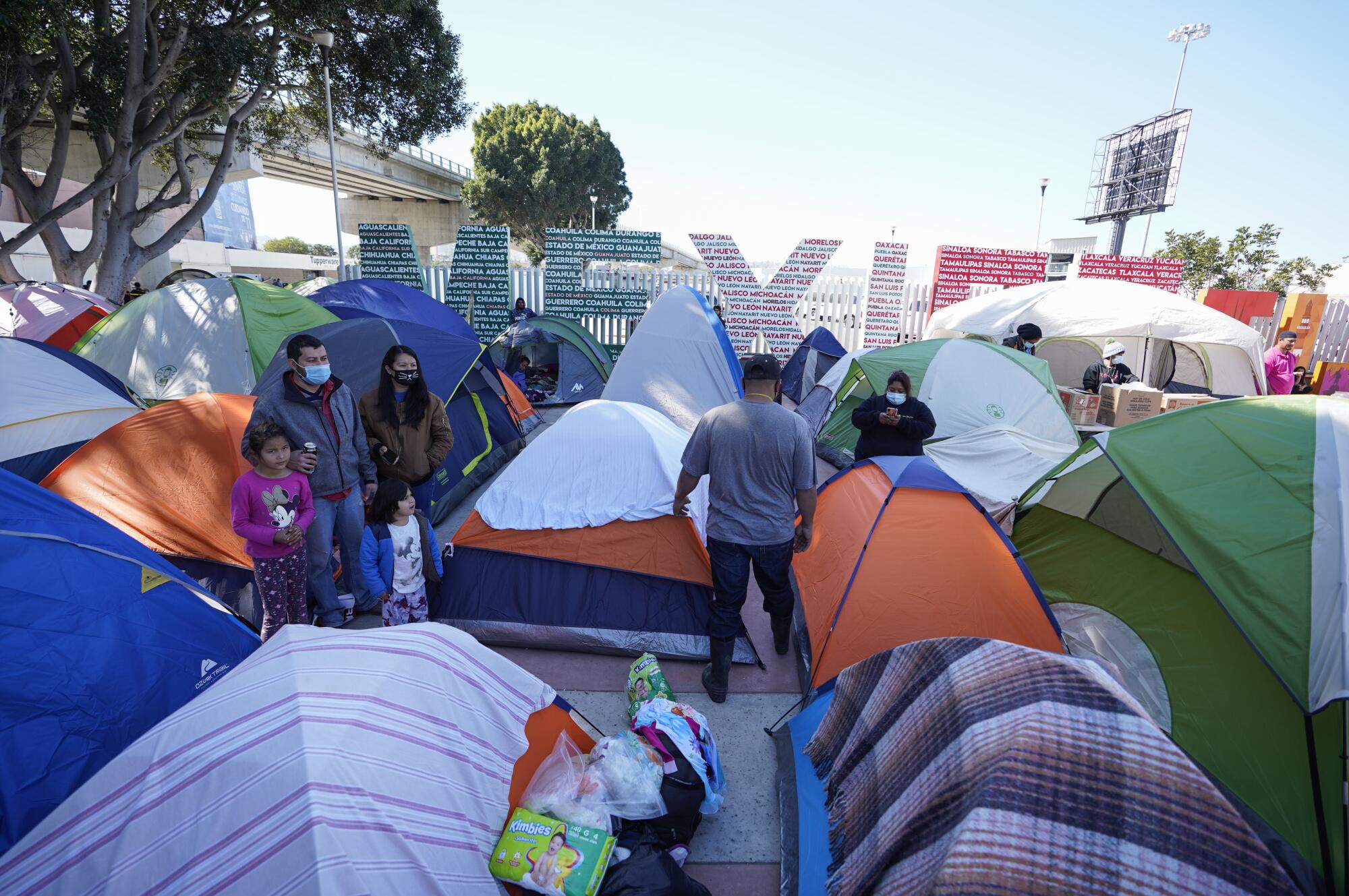
Many who lived there recalled witnessing terrifying situations that they still did not feel safe discussing more than a month after the end of the camp. They said the mantra they had learned to survive in their home countries — see nothing, hear nothing, say nothing — was necessary for survival in the camp as well.
But like many who were living in El Chaparral plaza, Vanessa feels that Mexican officials lied to them about what came next. Tijuana city officials had said they wouldn’t force the migrants to leave the plaza, but then they did just that beginning at 4 a.m. one Sunday in early February.
“Chaparral wasn’t a good place, but nothing like this happened to us there,” Vanessa said in Spanish, referring to the threats her teenage son received. “We didn’t have a roof, but we were good. These neighborhoods are very hot, very dangerous.”
This story is for subscribers
We offer subscribers exclusive access to our best journalism.
Thank you for your support.
On the day that city, state and federal police and Mexican National Guard evicted the asylum seekers in El Chaparral, officials encouraged everyone to board buses bound for shelters around the city while their tents and the belongings they weren’t able to gather in time were bulldozed.
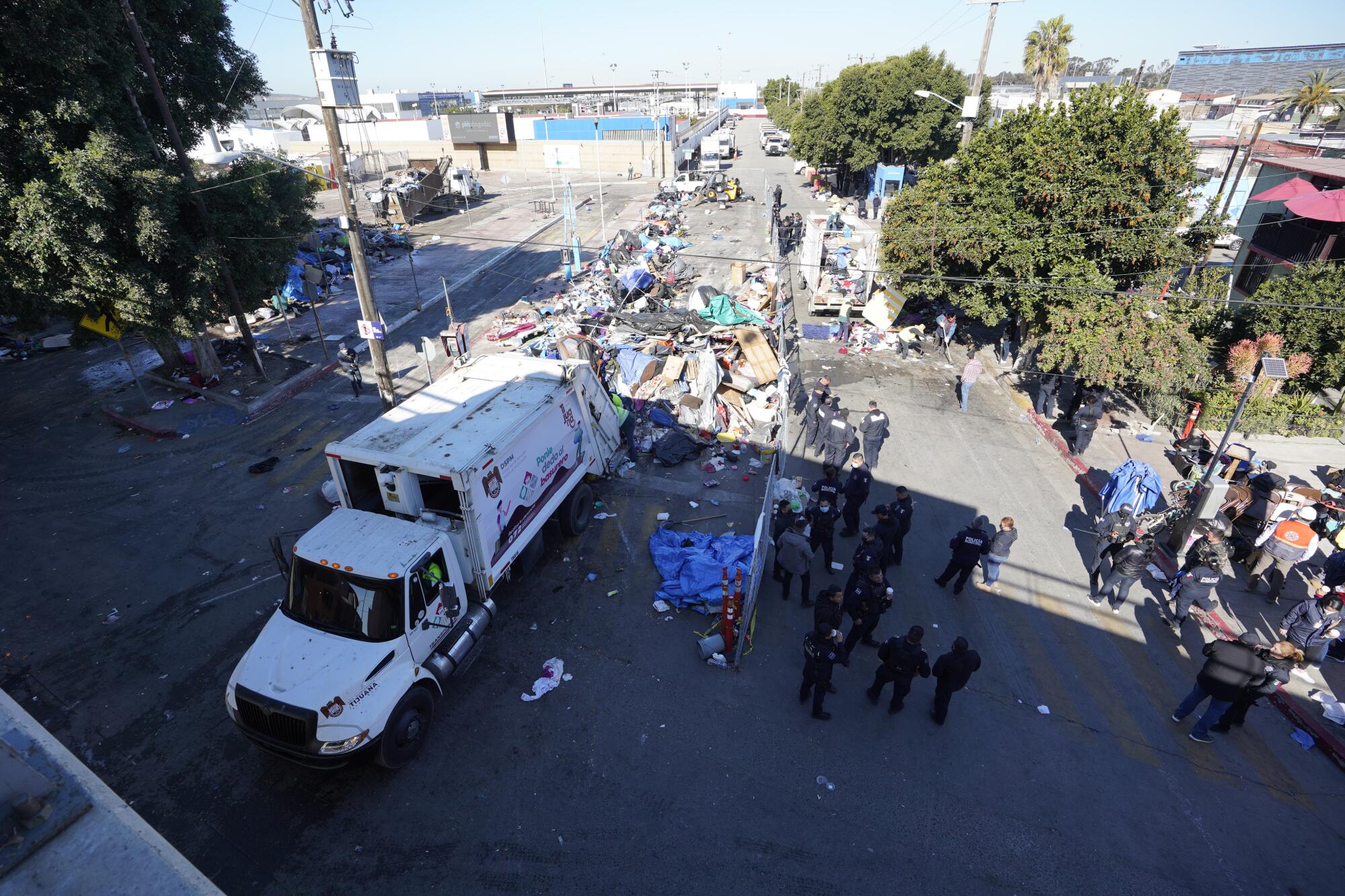
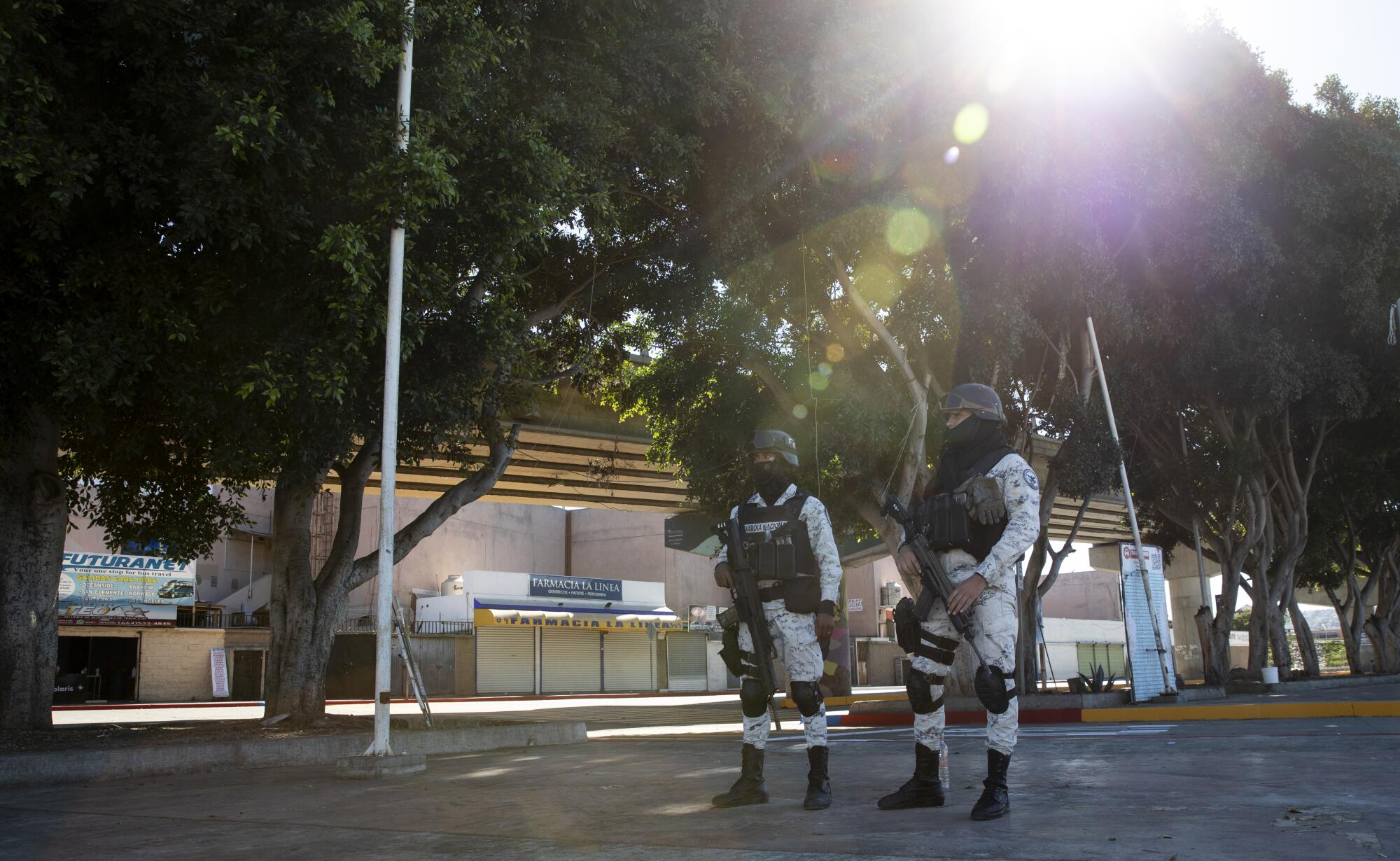
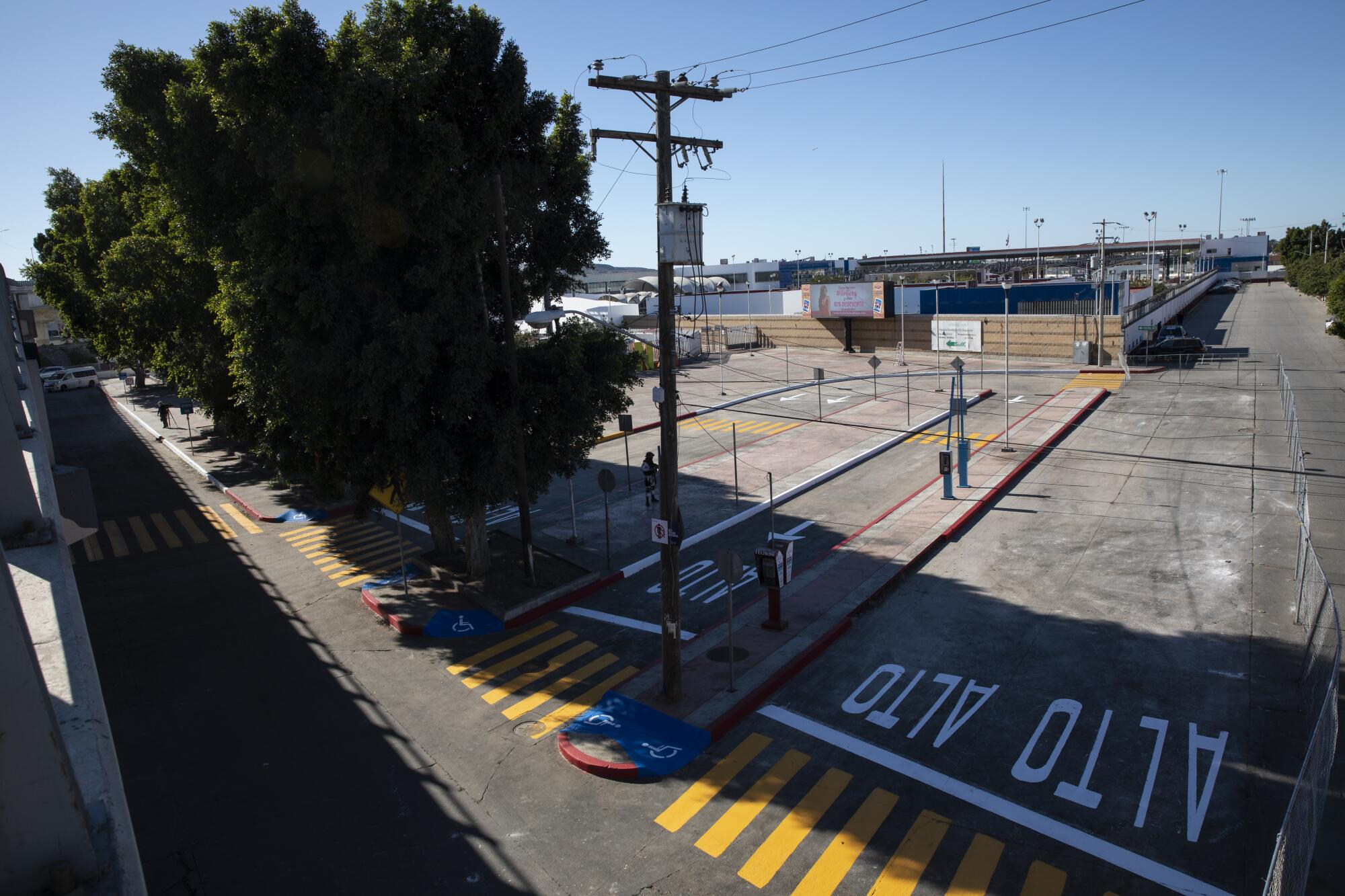
Since then, the people who lived in El Chaparral have scattered. Some are still in the shelters where they were taken the day officials cleared the camp. Others decided they were better off elsewhere in the city — in Vanessa’s case because shelter rules interfered with her ability to work.
Many, feeling they had no other option left to them, crossed the border without authorization into the United States, often taking a route through Los Algodones, a small town where the U.S.-Mexico border forms a point near Yuma, Ariz.
White House rolls out new system aimed at fixing asylum, a process that can drag out for years, was one of President Biden’s promises as a candidate.
And some are still living in tents. But now they’re far from the border, where passing tourists and daily commuters won’t see them.
Enrique Lucero, the municipal director of migrant care in Tijuana, said about 60% of people from the camp declined to go to shelters at all. He said the city is still working to support people displaced by the tent camp’s closing. He offered his cellphone number for anyone now in need of shelter.
Stuck in Mexico
Asylum-seekers, particularly those from Mexico and Central America, have been blocked from requesting protection in the United States for years.
That’s because of a policy known as Title 42, put in place by the Trump administration at the beginning of the pandemic and continued under President Biden. The policy, citing concerns about the spread of COVID-19, says border officials can keep out asylum-seekers and other undocumented migrants and expel them to Mexico or their countries of origin if they cross without permission.
Many public health experts have long criticized the policy as xenophobic and not based in science, and a panel of federal judges recently questioned its necessity. But the Biden administration has so far insisted that the pandemic continues to make Title 42 necessary for all migrants except unaccompanied children.
Its implementation has led to vast disparities based on nationality in the treatment that asylum-seekers at the border receive, in part because the policy requires cooperation with foreign governments. Some get in despite the policy while others are turned away even though they are fleeing imminent danger. Mexicans, Hondurans, Salvadorans and Guatemalans are among the most affected.
About a week before the El Chaparral camp closed, nearly half of the people living in the camp were from Mexico, according to data provided by Lucero. Another third were from Honduras, and the remaining group was mostly from El Salvador or Guatemala.
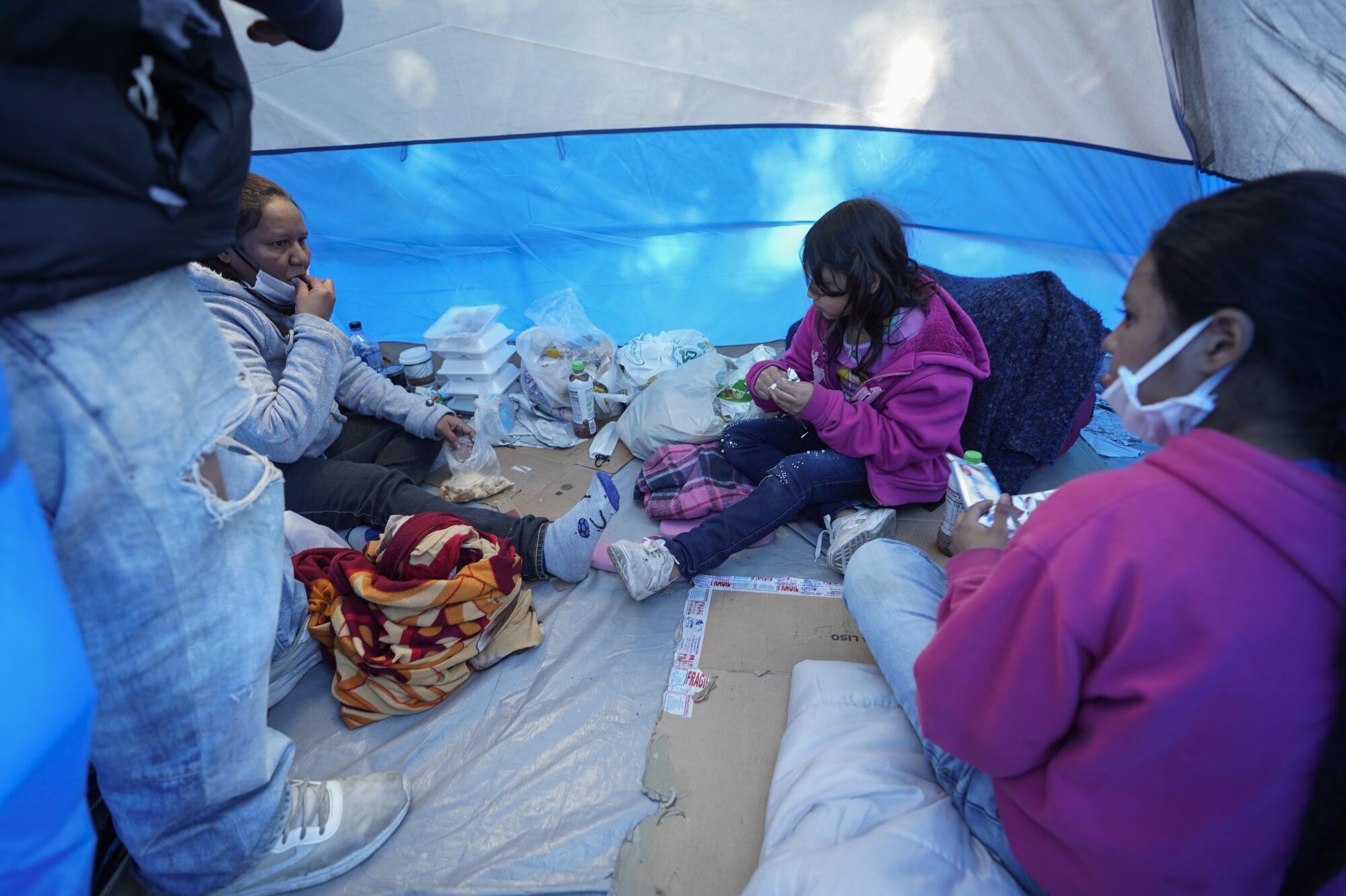
Tijuana officials tried for months to persuade asylum-seekers in the camp to move to shelters by bringing buses to the plaza on rainy nights. Few took the offer.
Officials expressed concern over conditions in the camp, particularly for the children who lived there. But there was a second motive to move the camp — the tents blocked access to the pedestrian border crossing known as PedWest, which had been closed since early on in the pandemic.
The pedestrian line to enter through San Ysidro Port of Entry’s PedEast has been at times hours long, especially after the border reopened to tourists. Many believed that PedWest, located at the other end of the same port of entry, would not open until the camp was gone.
Scuffles have broken out in the Mexican city of Tapachula between authorities and some of the tens of thousands of migrants who have been stranded there.
More than a month after the migrants and their tents were removed from El Chaparral plaza, PedWest remains closed.
Customs and Border Protection said the agency is continuing to assess staffing levels to determine when the crossing can reopen.
“Opening and staffing just PedEast will allow us to open more pedestrian booths at peak times, including using the lanes dedicated for bus passengers to keep wait times manageable,” a spokesperson said.
Meanwhile, despite possible expulsions under Title 42, many people who lived in El Chaparral have traveled to Mexicali and then on to Los Algodones to try crossing into the United States.
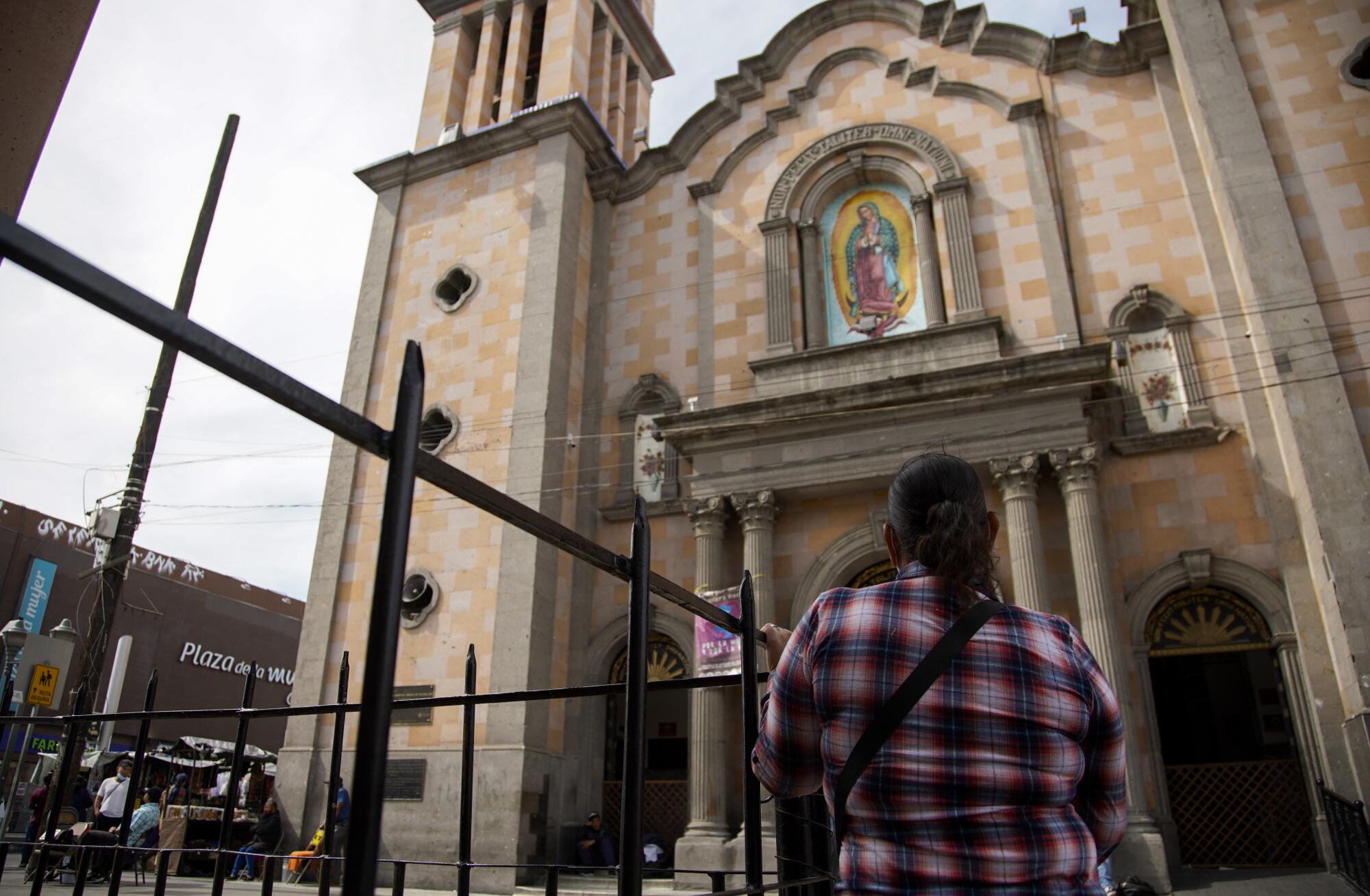
Maiyte, a mother of two, said that a lot of people she knew at the camp crossed that way, sleeping in a park in the small town until a guide told them it was time. Some were caught and sent back, but others made it through undetected, she said.
She showed photos on her phone that people had sent her of their journey through a gap in the border barrier.
She had planned to try herself, but the park where people waited to cross was cleared out before she could go. She’s still stuck in Tijuana.
A new camp
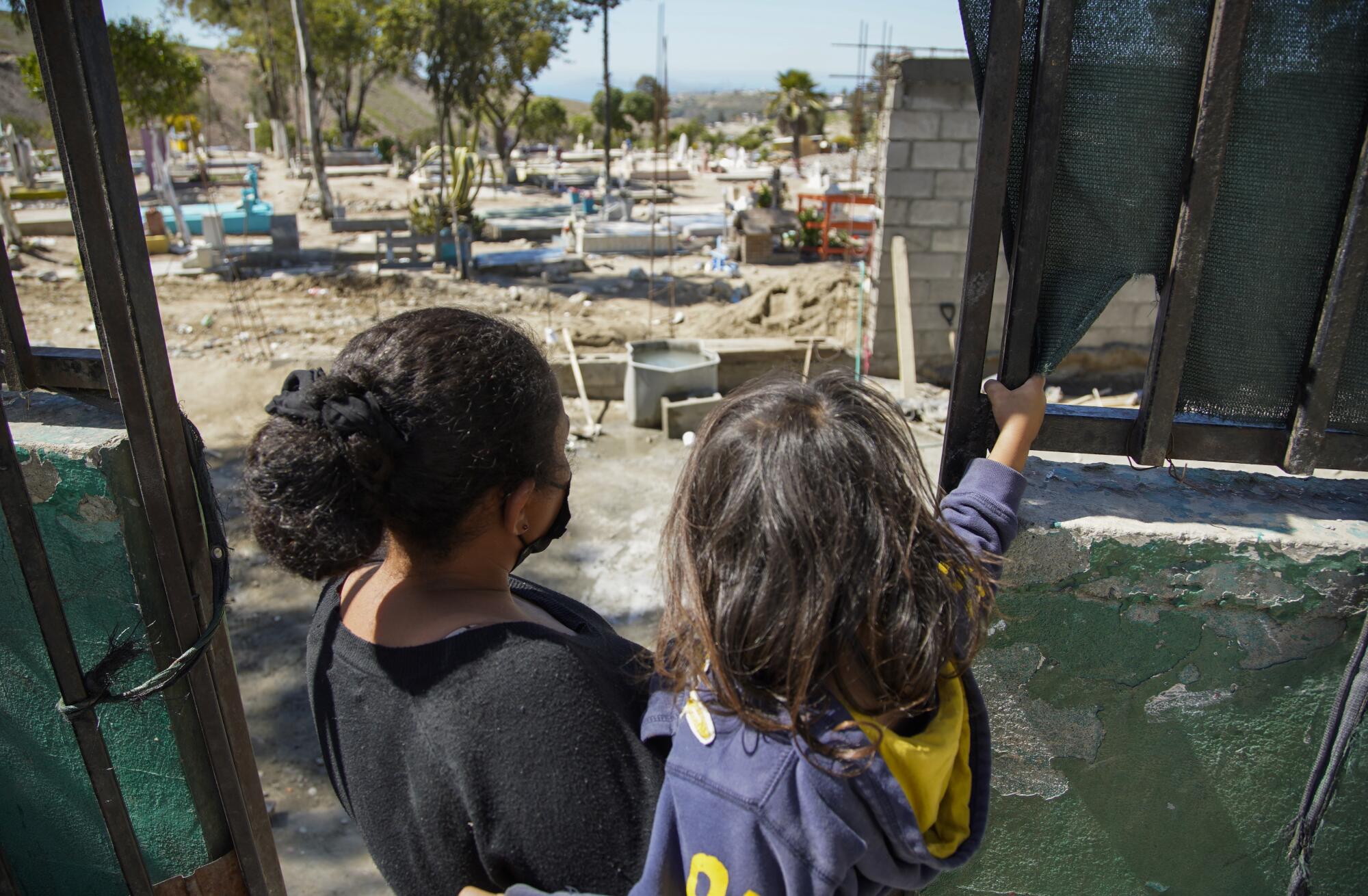
Ramiros and her family were among the people taken on a bus to a shelter from the camp.
But after the bus arrived, she was told that the shelter was already full, she said.
Someone gave her enough money to get to a park near downtown Tijuana, where she lived for a week until someone tried to kidnap her 2-year-old daughter. Terrified, Ramiros reached out to others she’d known from the camp, who helped her get to Agape, a shelter that had given them space on its patio because it, too, was already full.
When asked about the shelters filling up, Lucero, the Tijuana official, said, “No person who was in El Chaparral was left without a roof.”
But on the back patio of the Agape shelter, Ramiros showed photos on her phone of her family, including young children, sleeping at the park near the city center.
More than a dozen tents are now set up on the Agape patio to house families from El Chaparral.
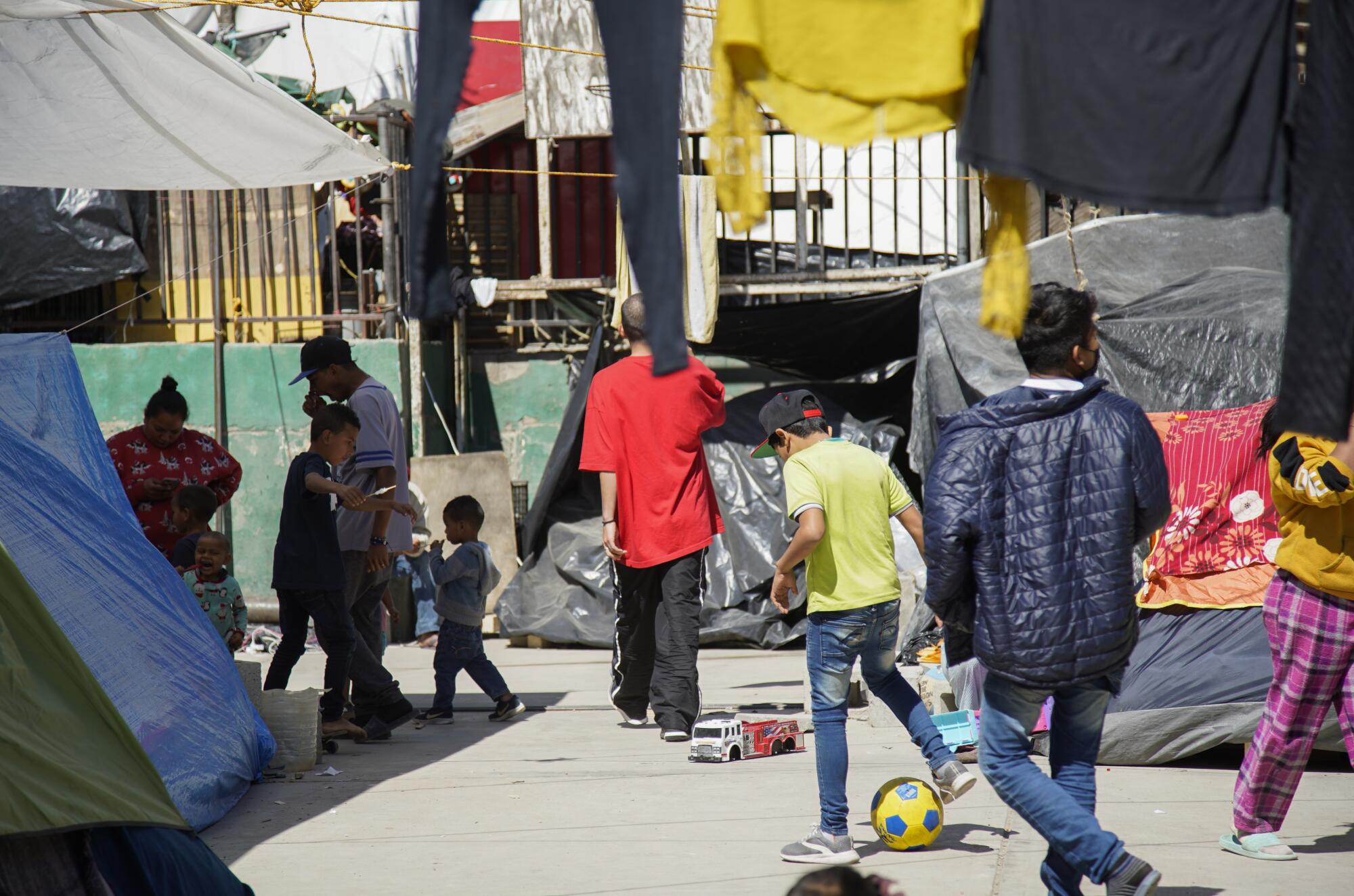
Most of the families said they initially went to shelters but left after a couple of days because the rules were too strict. Some had night shifts for work, but the shelters wouldn’t allow them to be gone during those hours. And families who had gone to the federal shelter, Centro Integrador para el Migrante Carmen Serdán, complained that the shelter staff took away their phones when they were inside.
Lucero said that the shelter rules are designed to maintain order and help people staying there adjust so that they can eventually survive on their own.
Some of the families at Agape said they left the shelters because they were discriminated against for having lived in the plaza.
At Agape, they mostly have to buy their own food, but they can work when they need to. The water in the area is often cut off, but they’re able to bathe every few days.
“This shelter does what it can for us,” said Torres, a woman from Honduras. “The pastor [of Agape] supported us when no one else did. They’re helping us how they could.”
Unlike living at El Chaparral, donations are hard to come by on the patio, so the families have to figure out how to make enough money to feed themselves. Most are not legally allowed to work in Mexico. Many complained that Tijuana police harass them when they try to sell food or jewelry on the street to survive.
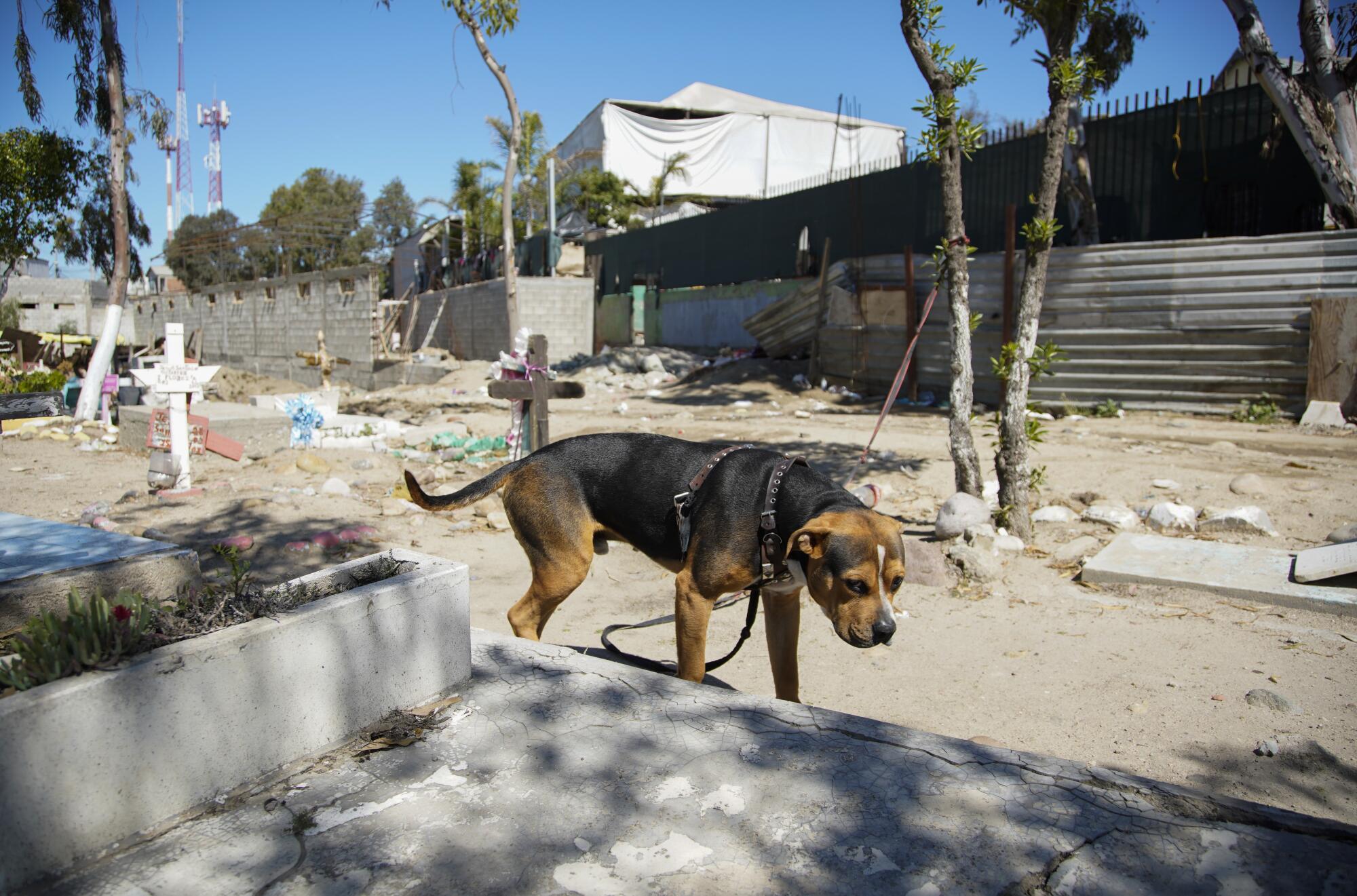
They feel safer on Agape’s patio than they did at El Chaparral plaza, they said, despite the fact that they often hear gunshots in the area near their new camp.
“Our goal is to pass through Mexico to get to a place where our children can be safe,” said Marta, a woman from Honduras.
“I can’t go back with my family even if I want to,” said a man from Honduras. He had photos showing an X-ray of a bullet near his spine as well as loved ones who had been killed. He had been in El Chaparral plaza since the camp formed in February 2021.
A YouTube celebrity
At the beginning of 2022, Carmen Rivera, who livestreams for a YouTube channel now called “Medrano Sin Fronteras,” spent a little over a week in the tent camp at El Chaparral, asking her followers to donate to her so she could buy food and supplies for the migrants. Videos show her sleeping in a tent in the plaza and talking with families from the camp.
On the day the camp closed, Rivera, who lives elsewhere in Mexico, livestreamed packing her bag before flying to Tijuana. She was in tears as she spoke with the asylum-seekers on the phone over her live feed.
Once in the city, she found a church to rent and persuaded some of the families to go live with her.
Since then, she has livestreamed more than 140 times from her channel to show the lives of the families at the church — as well as to host raffles. Some of the broadcasts tell raffle participants that thanks to their money, the children at the church are eating.
Rivera thanks donors tuned in to her videos, frequently calling on the migrants to cheer “Ra ra ra!” for her followers.
But according to several people who spent time at the church, there were days that most of the people living there received little to no food. They slept on the floor of the church, and on Sundays they had to leave the building during the church services.
Many left for Los Algodones and the border, and the number of people at the church shrank.
When asked about the money she receives to support the migrants in her care, Rivera denied pocketing any of it.
“I’m a person with a big heart,” Rivera said. “I’ve done nothing but help the Central Americans.”
Over the course of a phone interview, her explanations of the channel’s income were inconsistent. At times, she said the channel didn’t receive money, and at others, she said the channel had paid for beds and food for the asylum-seekers. She declined to provide specifics on amounts received or spent.
Rivera rebuffed claims about lack of food, saying that everyone eats three times a day. But she also said that if there isn’t enough food, the children are the ones who eat. She rejected claims that people had left because of mistreatment, saying that she’d kicked out the only families who left because of drug use or harassment of other asylum-seekers.
“The people who support me are people of good hearts,” Rivera said. “If you want to send me a check from the newspaper, I’ll feed them five times a day. Instead of criticizing us, they should support us. Carmen isn’t asking anything from any government.”
The situation at the church improved recently, according to one woman. Rivera bought beds — she livestreamed late one night to show them off once they had been delivered in a video titled “Quieting mouths, where is the money?”
“I want to clean up my image,” Rivera told her followers. “No one sent this surprise. This surprise is from the money that was generated.”
Surviving on their own
Vanessa and some of her neighbors, who were also at El Chaparral, went to a meeting at Rivera’s church to see if they should move there. They decided against it.
For now, they’re scraping by in moldy apartments with no electricity. They have sheets and blankets hung around their beds to create more privacy for the families living there.
Adults take turns watching all of the children so the rest can work.
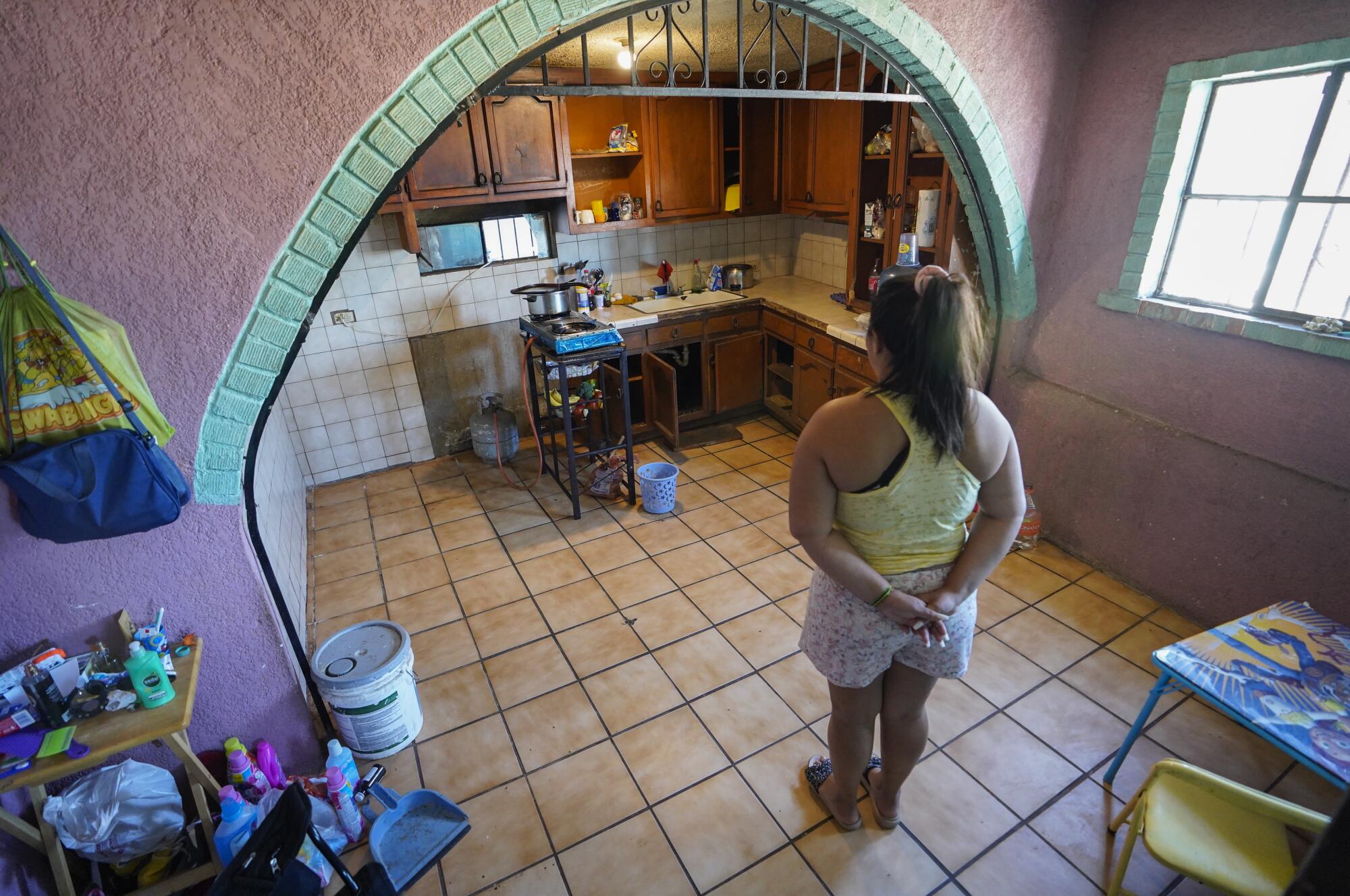
They’ve been told not to let the children play visibly in the building’s courtyard because of kidnappings in the area.
“The kids feel locked up in prison,” Vanessa said. “It’s hard for them.”
She wishes there were a way for her children to attend school. She worries about the lengthening disruption in their education.
The children miss their friends from the camp. She recalled how they cried the day the camp was shut down because they were so used to being together.
She and her neighbors have tried to find other places to rent, but they’re told they can only pay in dollars, and they need a security deposit in addition to the first month of rent. Even working as much as they do, the price is impossible for them to pay.
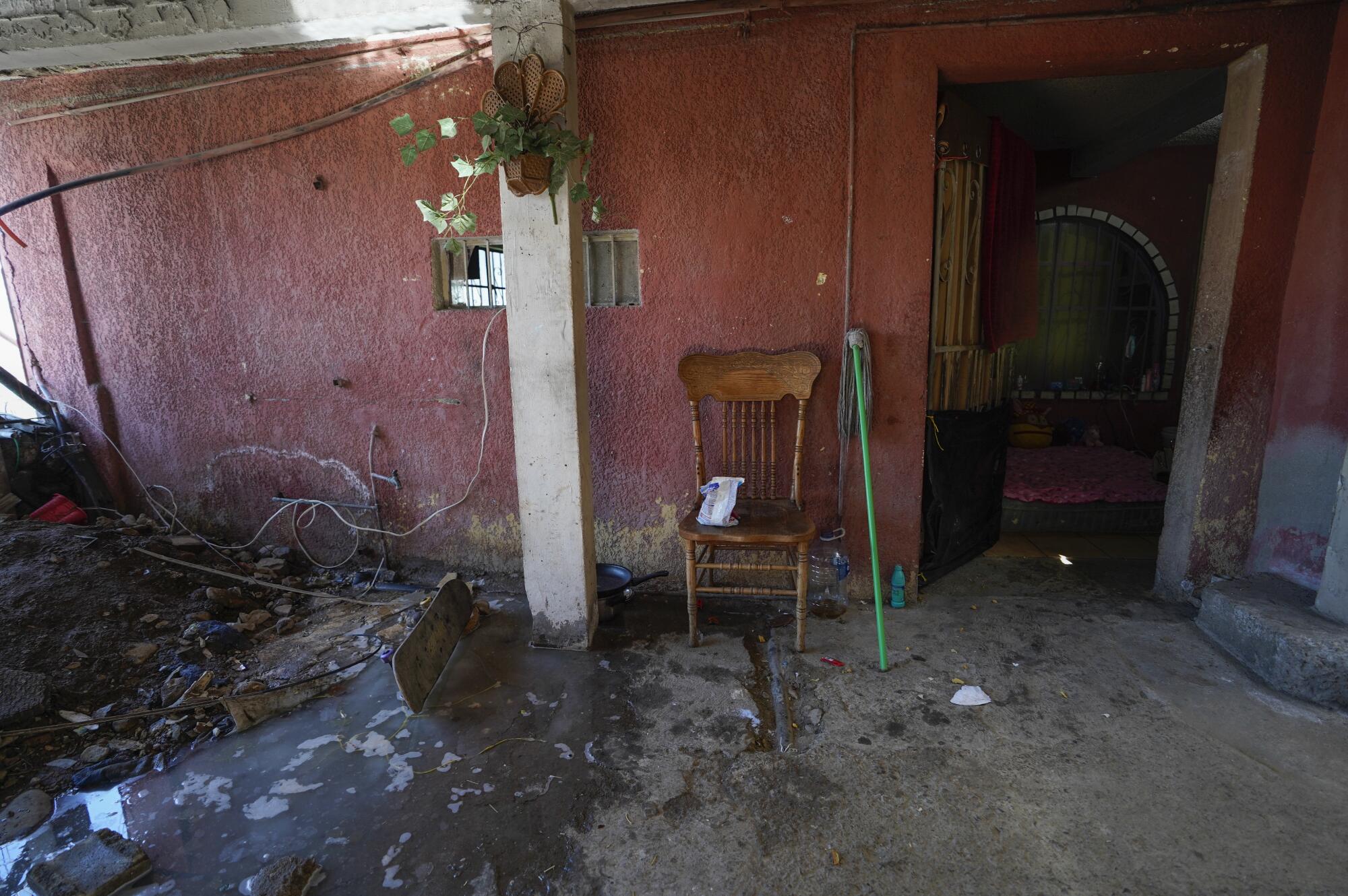
They’ve also thought about crossing the border, but that seems too dangerous because of the criminal organizations whose territory they would have to pass through.
“We are afraid on all sides from what is happening to us,” Vanessa said.
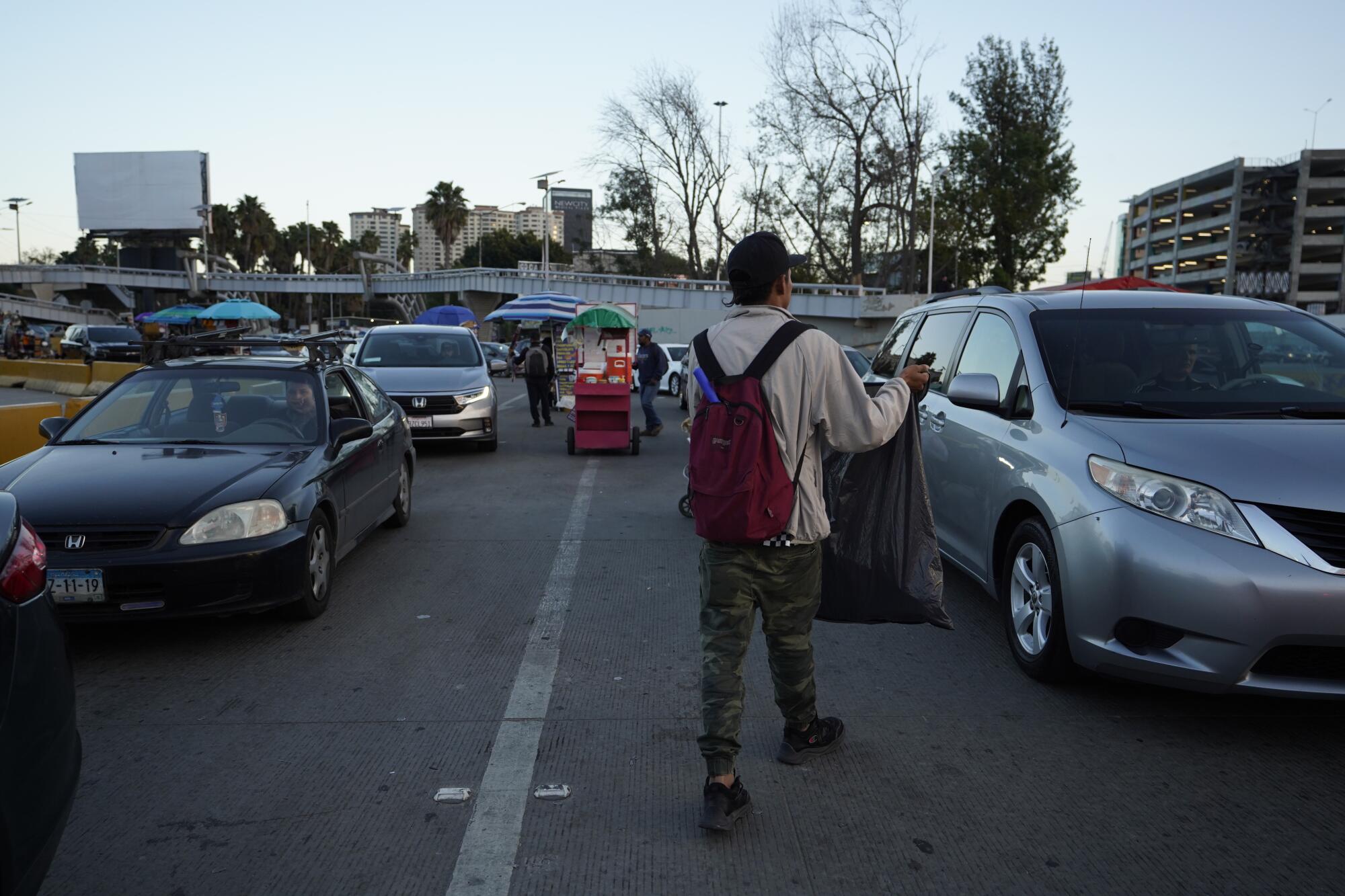
Pancho, a 21-year-old from Honduras who lived in the camp for more than five months, made the decision when El Chaparral closed to find a place to rent rather than going to a shelter.
He spent a few days living in a house that was under construction before being taken in by a family of 13 from Michoacán, Mexico, that had also been living the camp. Like everyone in the family, he sleeps on a blanket on the ground.
He works cleaning windshields of cars waiting to cross the border — when police don’t chase him away. He had a steadier job when he lived at El Chaparral working at a medical center, he said, but with the abrupt ending of the camp, he had to give it up.
He’s already been outside of his country for more than two years and has been expelled from the United States 11 times after trying to cross to seek asylum along the Texas border, he said. The last time he tried, he ended up kidnapped for weeks before he was let go and made his way to Tijuana.
He doesn’t feel safe in Mexico or in Honduras, where threats caused him to flee.
“Sometimes I think about going back to my country and giving up, but the American dream doesn’t go out,” Pancho said. “What will happen if I go back to my home? That will be the end of my life. It’s better to keep fighting.”
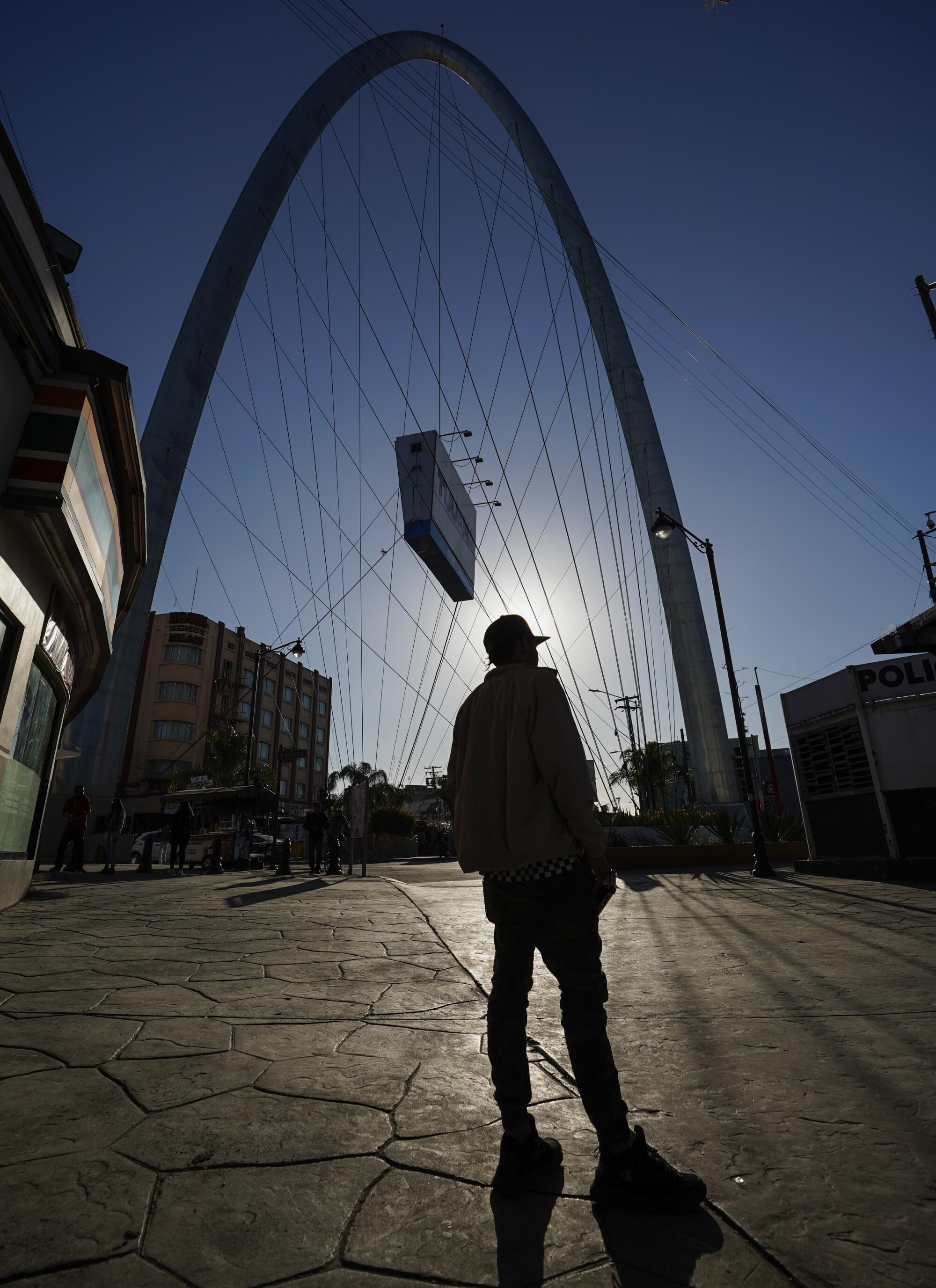
Morrissey writes for the San Diego Union-Tribune. Union-Tribune staff writer Alexandra Mendoza contributed to this report.
More to Read
Sign up for Essential California
The most important California stories and recommendations in your inbox every morning.
You may occasionally receive promotional content from the Los Angeles Times.
